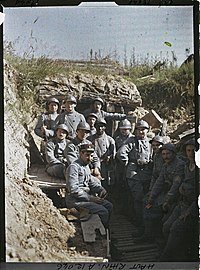ONE OF PAIR VERDUN 1918 WWI FRENCH CROWNED CHASED PUNCHED TRENCH ART BRASS SHELL CASINGS
CHECK OUT THE LISTINGS FOR BOTH OF THESE SHELL CASINGS AND MORE PHOTOGRAPHS AT:
http://www.ebay.co.uk/itm/330773204440?ssPageName=STRK:MESELX:IT&_trksid=p3984.m1555.l2649
http://www.ebay.co.uk/itm/330773211062?ssPageName=STRK:MESELX:IT&_trksid=p3984.m1555.l2649
STARTING PRICE: £29.99 EACH

|
IN THIS AUCTION
WE HAVE ON OFFER
ONE OF
A FANTASTIC
IDENTICAL PAIR
VERDUN
1918
FRENCH
WWI
CROWNED
EMBOSSED
LATHE TURNED
WITH
DEDICATION OF
VERDUN 1918
DATED 1916
THESE POIGNANT TRENCH ART SHELL CASINGS WERE BOUGHT ON MY RECENT TRIP TO FRANCE FROM A DEALER IN PARIS
THE EMBOSSED DESIGN IS WORKED IN THE ROUND AND CONSISTS OF
A STYLISED STEM WITH LEAVES AND FLOWER
EACH HAVING THE DEDICATION:
VERDUN 1918
AS CAN BE SEEN IN THE PHOTOGRAPHS
THE RIMS ARE OF A CUT AWAY CROWNED DESIGN
THE THE WORK IS OF A VERY GOOD QUALITY
THESE HAVE BEEN POLISHED TO A HIGH DEGREE AS THEY WERE FIRST INTENDED
THE DESIGN REMAINS CRISP WITH NO SIGN OF WEAR
BOTH SHELL CASINGS ARE IN EXCELLENT CONDITION WITH NO CRACKS SPLITS AND ONLY POSSIBLY MINOR DINGS (HOWEVER I CAN'T SEE ANY)
THE BASE BARES THE LEGEND:
DEC (DENOTES IT AS FRENCH)
75 (I BELIEVE RELATES THE CALIBRE)
668 (I BELIEVE TO BE THE LOT NUMBER)
L (WOULD DENOTE THE MANUFACTURER AS:
PYROTECHNIC MARITIME de LOURIENT)
16 (I BELIEVE TO BE THE DATE OF MANUFACTURE)
SOURCE: TRENCH ART AN ILLUSTRATED HISTORY, JANE A. KIMBALL, PUB; SILVERPENNY PRESS DAVIS, CALIFORNIA
French counter-offensives in late 1916 and August 1917
The French launched a major counter-offensive to recapture Douaumont in October of 1916 (the First Offensive Battle of Verdun (French: 1ère Bataille Offensive de Verdun)). Its architect was General Nivelle, an experienced commander in the use of artillery. The preparation, which lasted six days, consumed 530,000 75 mm artillery shells plus 100,000 155 mm shells, not counting the heavier calibers. The final assault on Fort Douaumont combined an infantry attack following behind a "creeping" forward artillery barrage timed to keep the enemy machine gunners down.
To soften up Douaumont before this assault, two French Saint-Chamond railway guns located 13 km (8.1 mi) to the southwest at Baleycourt had inflicted crushing blows onto the fort with 400 mm (16 in) shells, each weighing 1 short ton (0.91 t). At least 20 of those shells hit the fort, six of them penetrating down to the lowest levels before exploding. The Germans partly evacuated Douaumont which was then recaptured on the 24th of October by French marines and colonial infantry. On the 2nd of November, the Germans evacuated Fort Vaux which had also come under fire from the 400 mm railway guns.
A broader offensive, planned by General Nivelle and executed by General Mangin, began on the 15 of December and drove the Germans back close to their initial February starting lines. Within 36 hours the French had taken 11,387 prisoners, including 284 officers, and captured 115 artillery pieces. To some German senior officers who complained to Mangin about their lack of comfort in captivity he replied (translated from the French): "We do regret it, gentlemen, but then we did not expect so many of you". Unquestionably, German morale at Verdun had begun to deteriorate after the failure to seize Fort Souville and then later after the loss of Fort Douaumont.
(LEFT: French reserve troops crossing a river on their way to Verdun.)
On the 20th of August in 1917, a geographically limited French offensive (the Second Offensive Battle of Verdun (French: 2ème Bataille Offensive de Verdun)), was carried out on the left bank following an overwhelming heavy artillery preparation ( nearly 2000 guns firing at a 4 km long by 0.5 km wide target area). In only four days French assault troops had completely recaptured both "Mort-Homme Hill" and the "Côte 304". They also occupied deep and long underground tunnels ( the Bismarck, the Kronprinz and the Gallwitz tunnels ) that connected the German front lines to their rear underneath the "Mort-Homme" and "Cote 304" hills. Otherwise and later on, during 1918 and until the Armistice, the Verdun Sector remained an active battle zone where the two adversaries never ceased to confront each other in life-wasting local actions.
A certain discontent had begun to spread among the French combatants on the Verdun battlefield during the summer of 1916. The departure of General Pétain from his Verdun command on the 1st of June, 1916 and his replacement by General Nivelle had a negative impact on the soldiers' morale to a point that five infantry regiments were affected by short-lived episodes of collective indiscipline. Furthermore, only ten days after Nivelle had replaced Pétain, two French lieutenants, Henri Herduin and Pierre Millant were summarily executed by firing squad, on the 11th of June 1916, at Fleury-devant-Douaumont. The executions were illegal since they were carried out without a court martial or any other form of judgement.
Ten years later, in 1926, after an inquiry that became a "cause célèbre", the late Lieutenant Herduin and Lieutenant Millant were exonerated, and their official military records expunged. More generally, the horror of Verdun never left the battlefield until the Armistice of 11 November 1918 finally put an end to it. The last major combat in the Verdun sector took place during the Meuse-Argonne offensive, successfully carried out by the American Expeditionary Forces (AEF) from 12 September to the Armistice.
SOURCE: http://en.wikipedia.org/wiki/Battle_of_Verdun
|



No comments:
Post a Comment